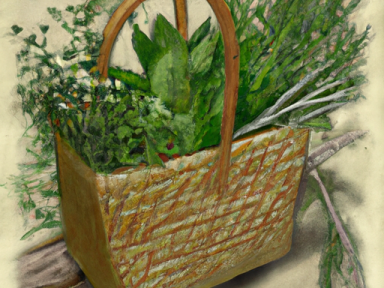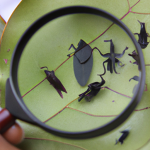
Wild Greens: Nature’s Nutritional Powerhouses
In a society that heavily relies on the convenience of processed and packaged foods, it’s easy to forget that nature provides us with an abundance of nutritious options right at our fingertips. Wild greens, often overlooked and dismissed as weeds, are actually a treasure trove of vitamins and minerals. These greens not only offer exceptional nutritional benefits, but they can also be foraged for free, making them an invaluable resource for those seeking self-reliance and survival skills.
The Benefits of Foraging Wild Greens
Foraging wild greens is not only a way to connect with nature, but it also allows us to tap into a sustainable food source that requires no inputs of water, fertilizers, or pesticides. These resilient plants have adapted to thrive in various environments, making them readily available in both urban and rural settings. Plus, the act of foraging provides valuable exercise and a sense of independence – skills that are vital in a crisis situation.
Types of Edible Wild Greens
1. Dandelion Greens: Often seen as a nuisance, dandelions actually offer a range of health benefits. Rich in vitamins A, C, and K, as well as calcium and iron, these bitter greens make a great addition to salads or can be sautéed as a side dish.
2. Nettle: Despite their stinging reputation, nettles are packed with nutrients including vitamins A, C, and K, as well as iron and calcium. Cooking or steeping the leaves in hot water removes the stinging chemicals and provides a delicious, earthy flavor.
3. Lambsquarters: Commonly found in gardens and waste areas, lambsquarters are often mistaken for spinach. This leafy green is extremely high in vitamins A and C, as well as calcium and potassium. It can be cooked or eaten raw in salads.
4. Chickweed: Filled with vitamins A and C, as well as minerals such as calcium and magnesium, chickweed has a mild, slightly sweet flavor. Add it to soups or salads for an extra nutritional boost.
5. Wild Garlic: A close relative of chives and garlic, wild garlic is abundant in many areas. Not only does it provide a unique flavor to dishes, but it also boasts antibacterial and antiviral properties.
6. Purslane: With its succulent leaves and lemony taste, purslane is a nutritional powerhouse. It contains high levels of omega-3 fatty acids, as well as vitamins A, C, and E. Use it in salads or sauté it as a side dish.
Preparing and Using Wild Greens
Before consuming any foraged greens, it’s important to positively identify them and ensure they haven’t been contaminated by pollutants or pesticides. Once you’ve identified your greens, give them a thorough rinse to remove any dirt or debris.
Wild greens can be used in a variety of ways, whether eaten raw in salads, cooked in stir-fries, or added to soups and stews. Get creative and experiment with different ways to incorporate these nutrient-packed plants into your meals.
Final Thoughts
By embracing the abundance of wild greens, we not only enhance our nutritional intake but also develop valuable skills for self-reliance and survival. Start exploring the natural world around you and discover the incredible benefits these resilient plants have to offer. Remember, in times of uncertainty, nature has a way of providing for those who are prepared.



GIPHY App Key not set. Please check settings